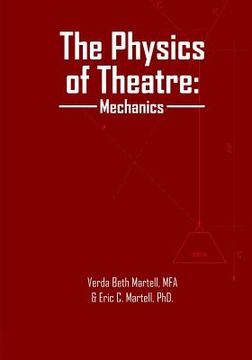Reseña del libro "The Physics of Theatre: Mechanics (en Inglés)"
This eagerly awaited text from the United States Institute for Theatre Technology Physics of Theatre Project provides a firm conceptual grounding in physics principles along with a clear guide of how to apply those concepts to numerous common theatrical situations. How much power do you need to drive a wagon or skid? Why do we use design factors and where do those values come from? How does a rake affect the moving scenery installed on it? The Physics of Theatre: Mechanics is a first step to understanding why the machines in theatre work the way they do. The first half of the book uses theatrical examples to guide readers through developing an understanding of kinematics, statics and dynamics, rotational mechanics, and center of mass. The second half applies these concepts to increasingly complex theatrical machines: wagons and skids, static rigging, dynamic rigging, turntables, and jackknives. See the companion website, physicsoftheatre.org, for even more examples and resources. Use the Physics of Theatre Forum to ask your questions and get answers from us and other technicians. For some theatre technicians, the idea of delving headlong into physics might seam daunting, so a math primer is included to help exercise those math skills again before diving into the text. The examples and formulas used in this text are algebra and trigonometry based. Theatre technicians do harder things than this every day. You can do this math. For instructors, this text includes a guide to pedagogical techniques and resources which have been validated through research and are known to increase student learning. The examples in this book work up from first principles - Newton's laws and basic truths about how the world functions. By working all of the formulas from the ground up, students learn how and why the formulas work. They can also make informed decisions about how to change the formula to fit their specific situations. Understanding first principles and having the ability to derive equations is an incredibly powerful skill. There are no mystery equations in this book. In each case, the reader knows where the equation came from and what assumptions were made. One of the great powers of working formulas from base principles is that one set of concepts allows a user to create and adapt one formula for multiple situations rather than trying to remember numerous formulas, each for a specific case. For instance, this text will walk readers through generating one formula to determine the tensions in 2-point bridle rigging. Whether the bridles are even or uneven, at the same height or different heights doesn't matter. The tensions can be found for any bridle if we know the angles off of vertical and the load. The same advantage exists for linear motion. If we are willing to do a little math, we can determine the force necessary to drive a wagon or skid at a particular acceleration, stop a fire curtain cleanly at the deck, or investigate why allowable fall arrest distances are what they are. The process for all of these situations is startlingly similar. It doesn't matter if we generate the necessary force with cylinders, motors or humans. If we start with the forces acting on a system, then we can choose the mechanics that best fit our situation, rather than choosing a type mechanism up front. It also gives us a straight-forward path for combining machines. The Physics of Theatre: Mechanics hopes to increase our intuition as technicians and mechanical designers, so we can create a safer, more efficient industry.

